Counting - Definition, Examples, Quiz, FAQ, Trivia
Learn counting concepts including number sense, skip counting, and comparison with interactive activities
What is Counting?
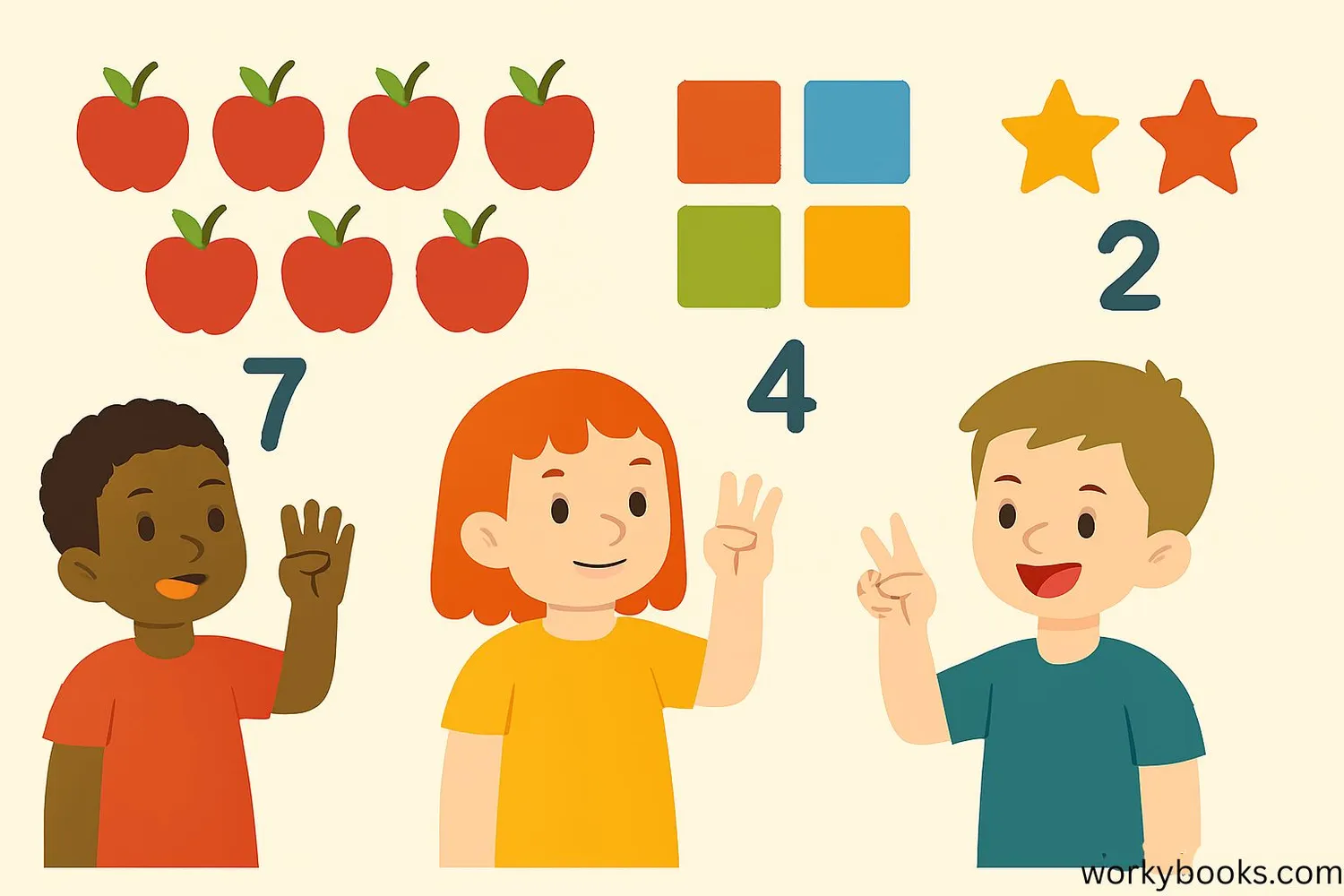
Counting is the process of finding out how many objects are in a group. It's one of the first math skills we learn and forms the foundation for all other math concepts.
When we count, we assign a number to each object in a group, saying numbers in order: 1, 2, 3, 4, 5... Each number represents one object. The last number we say tells us the total number of objects.
Counting helps us answer important questions: How many cookies are on the plate? How many friends are at the party? How many books are on the shelf?
Key Concept
Counting involves matching numbers to objects in a one-to-one relationship and understanding that the last number said represents the total quantity.
Developing Number Sense
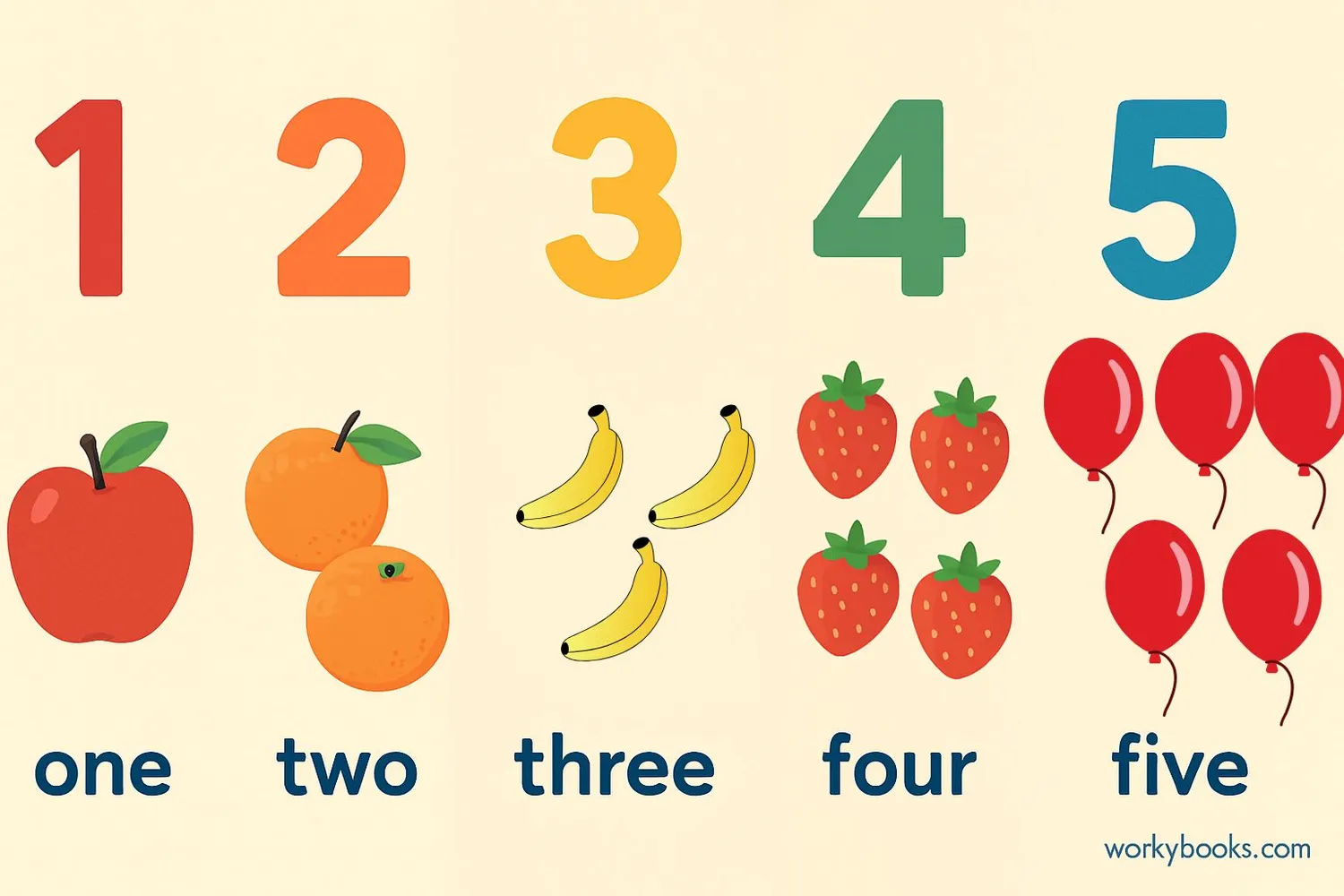
Number sense is understanding what numbers mean and how they relate to each other. It's more than just counting - it's knowing that:
- Numbers represent quantities
- Each number is one more than the number before it
- Numbers can be broken apart and put together
- The same quantity can be represented in different ways
Developing strong number sense helps you work with numbers flexibly and solve math problems more easily.
Remember
Good number sense means understanding that 5 is one more than 4, and that 5 can be made from 2 and 3, or 1 and 4.
Skip Counting
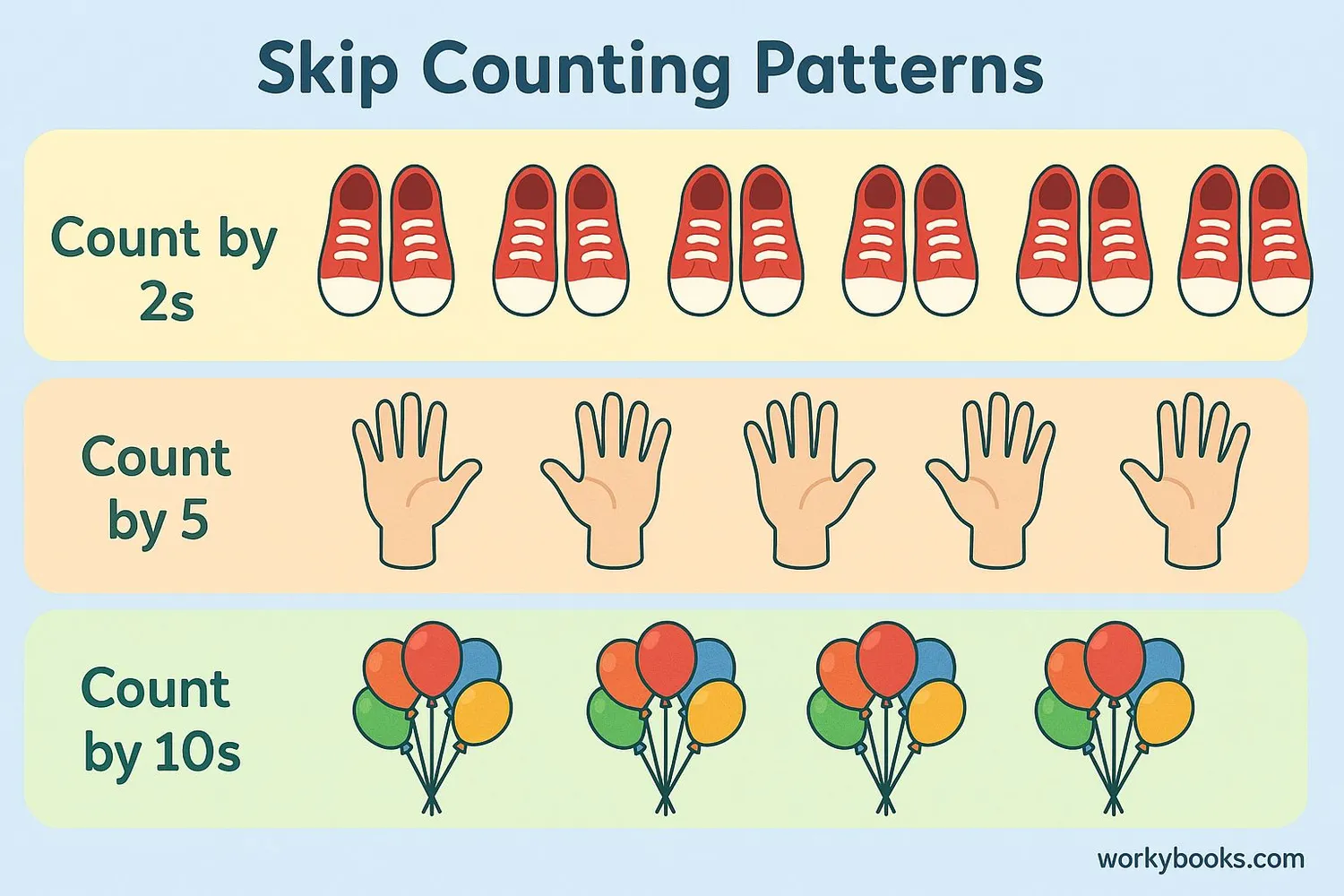
Skip counting is counting by numbers other than one. Instead of counting 1, 2, 3, 4, we might count:
By 2s: 2, 4, 6, 8, 10...
By 5s: 5, 10, 15, 20, 25...
By 10s: 10, 20, 30, 40, 50...
Skip counting helps us count large groups quickly and prepares us for multiplication. Notice how when we skip count, we're actually making equal groups!
Skip Counting Patterns
| Counting by 2s | Counting by 5s | Counting by 10s |
|---|---|---|
| 2 | 5 | 10 |
| 4 | 10 | 20 |
| 6 | 15 | 30 |
| 8 | 20 | 40 |
| 10 | 25 | 50 |
Pattern Tip
When skip counting, all the numbers you say follow a pattern. For counting by 5s, all numbers end with 5 or 0!
Counting Forward and Backward
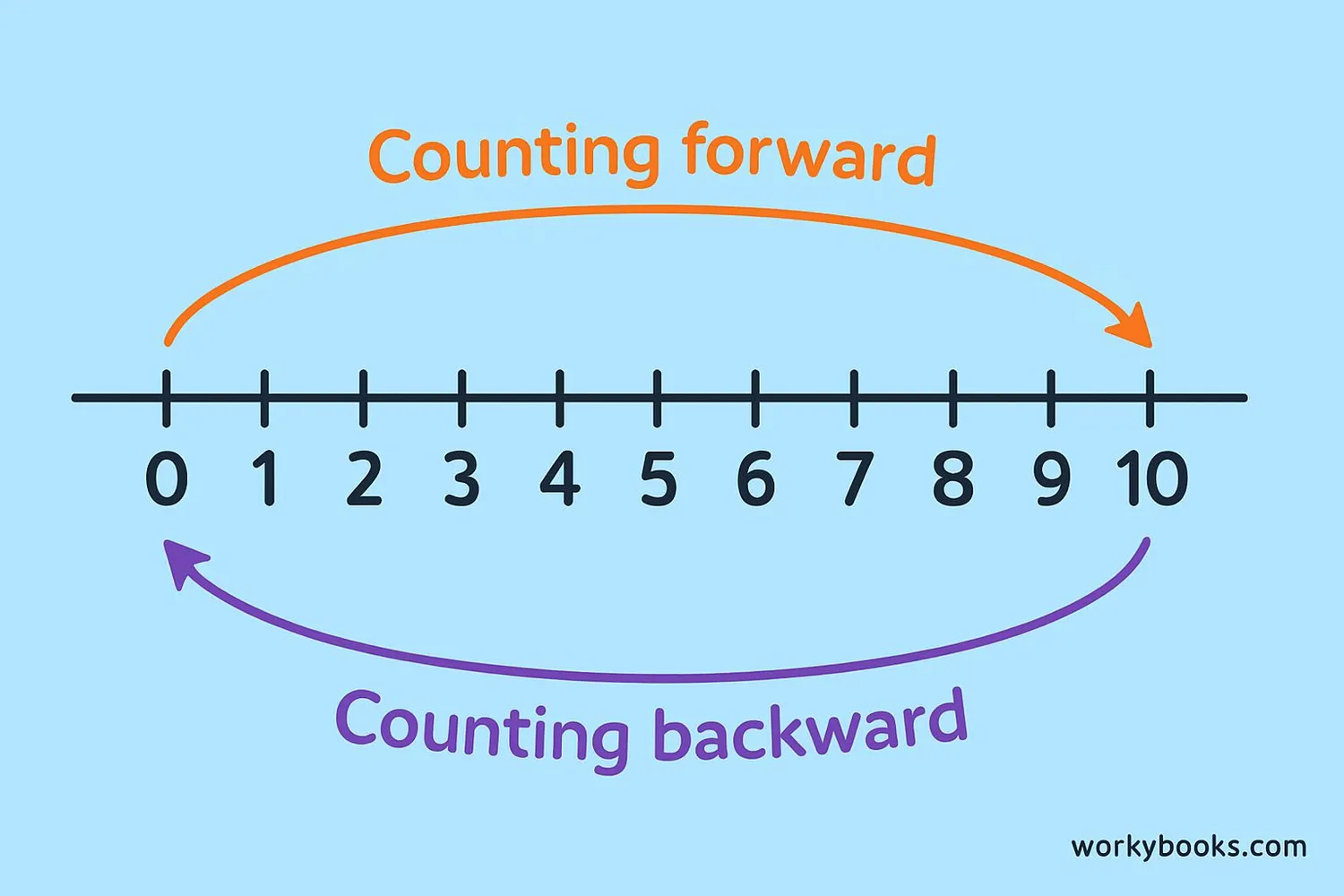
Counting isn't just about going forward! We can also count backward from a number to a smaller number.
Counting forward: Starting from a number and saying the next numbers in order: 5, 6, 7, 8, 9...
Counting backward: Starting from a number and saying the previous numbers in order: 10, 9, 8, 7, 6...
Counting backward helps us with subtraction and understanding that numbers get smaller as we count down.
Practice Tip
Try counting backward from different starting points: from 20, from 15, or even from 100!
Counting and Comparison
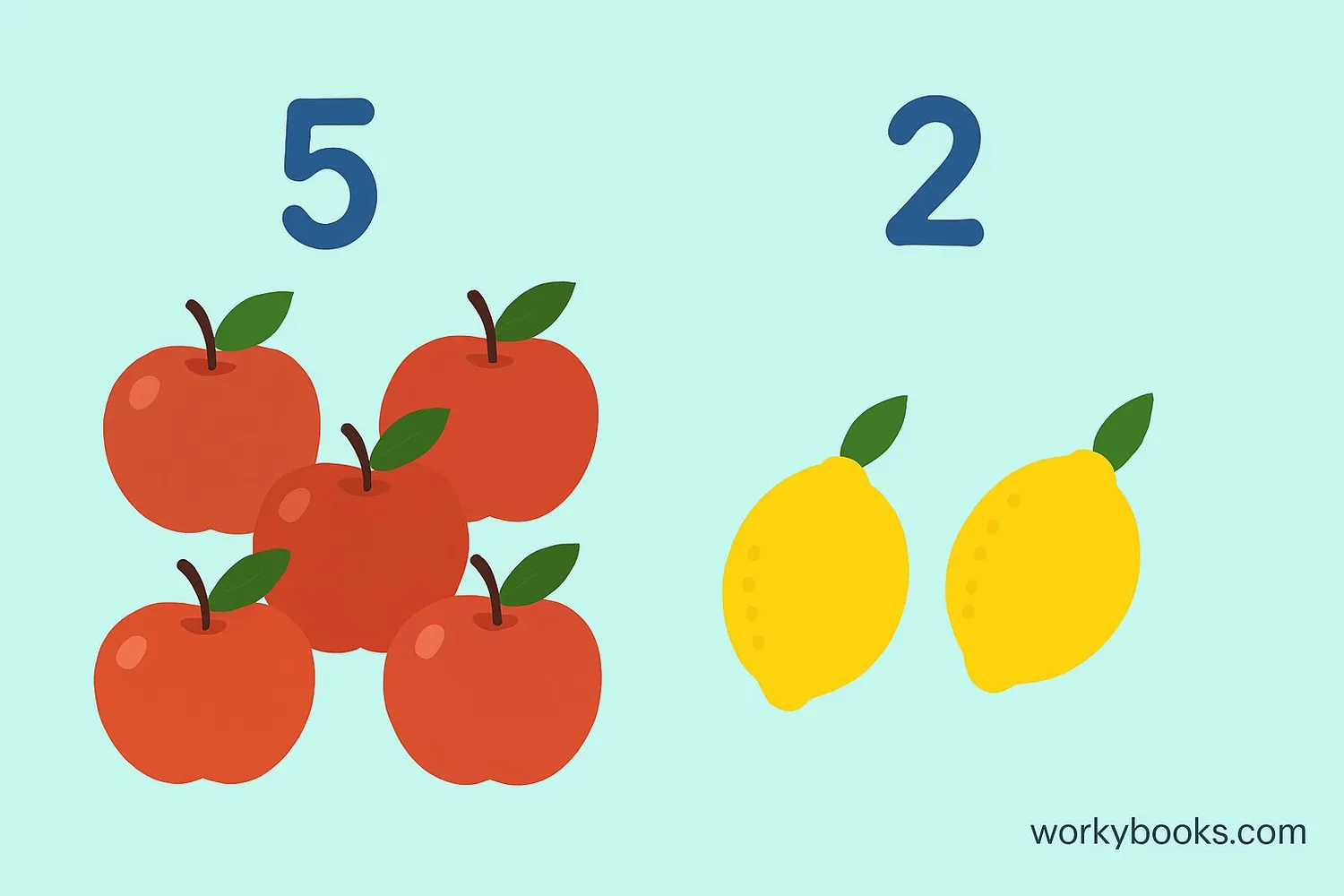
Counting helps us compare groups and understand relationships between numbers. We can determine:
- Which group has more items
- Which group has fewer items
- If two groups have the same number of items
By counting objects in different groups, we can use numbers to compare them. For example:
Group A has 8 apples
Group B has 5 apples
So Group A has more apples than Group B
Comparison Symbols
We use special symbols to show comparisons:
Greater than: > (Example: 8 > 5)
Less than: < (Example: 3 < 7)
Equal to: = (Example: 4 = 4)
Counting Practice Quiz
Test your counting skills with this 5-question quiz. Choose the correct answer for each question.
Frequently Asked Questions
Here are answers to common questions about counting:
Math Trivia
Discover interesting facts about numbers and counting:
Ancient Counting
The earliest evidence of counting dates back over 40,000 years. Ancient people used tally marks on bones and cave walls to count animals, days, or other important quantities.
Animal Counting
Many animals can count! Studies show that monkeys, birds, and even fish have basic counting abilities. Honeybees can count up to four landmarks when navigating.
Counting Record
The world record for counting aloud belongs to Jeremy Harper who counted to 1,000,000 in 89 days. He streamed the entire count online and raised money for charity!
Different Number Systems
Not all cultures use base-10 counting. The Yuki people of California used a base-8 system (counting on spaces between fingers). Some cultures in Papua New Guinea have base-27 counting systems!





